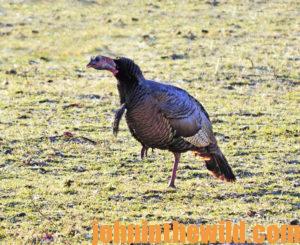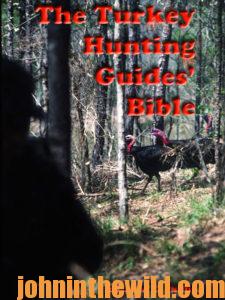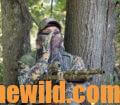Editor’s Note: Bob Walker of Livingston, Alabama, hunts turkeys every day of the season as a guide at Bent Creek Lodge (http://www.bentcreeklodge.com/ – 205-398-3040) in Jachin, Ala. This week Walker will tell us the most-productive ways to hunt turkeys.
When I get out of my truck, I’ll let the woods settle for a little while. Then I’ll do  an owl call. If I hear a turkey, I’ll wait a short time to make sure another turkey doesn’t call closer to me. On too many mornings, I’ve listened to a turkey gobble and gone running to him, only to hear a turkey behind me gobble that sounds as though he’s very close to my truck. If you’ll stand still, you may hear a hen give a tree call and then call again. A gobbler may answer her.
an owl call. If I hear a turkey, I’ll wait a short time to make sure another turkey doesn’t call closer to me. On too many mornings, I’ve listened to a turkey gobble and gone running to him, only to hear a turkey behind me gobble that sounds as though he’s very close to my truck. If you’ll stand still, you may hear a hen give a tree call and then call again. A gobbler may answer her.
Something that I’ve learned is that the first thing in the morning when a tom gobbles, he’ll be listening more intently than at any other time of day. He’s not only listening to hear hens call, he’s also listening to hear any signs of danger. I’m totally convinced that a turkey can hear and understand what a hunter in the woods sounds like, and where he is. When he’s on his roost in a tree, he can hear you much farther from the tree than he can when he’s on the ground. A turkey stays alive by trying to determine what’s on the ground where he’s about to fly. So, that turkey wants to hear if there’s a coyote, a fox, a bobcat or a hunter walking in the area where he’s planned to light. The gobbler can’t see very well, particularly in the dawn of that early morning light, so he has to depend on his ears to tell him where the danger is. If that turkey can hear you walking up and sitting down, he may keep gobbling and may answer your calling. But he won’t walk anywhere close to where he’s heard you. This is where a hunter has to be honest with himself and answer the question, “Am I really quiet when I walk in these woods?” If you’re aware that you make noise when you walk in woods, then stop 150–250 yards away from the turkey and set-up on him. If you believe you’re extremely quiet when you walk in the woods, then get to within 100 yards of the tom.
Another thing I want to know before I go to the gobbler is which way he’s facing when he’s gobbling. If the turkey is facing toward me and gobbling, he’ll sound much closer than if he’s gobbling, facing away from me. That’s why I like to hear a tom gobble two or three times before I finally decide to go to him. If you walk slowly and quietly, you may see the turkey moving in the tree or walking down a limb before you spook him.
I want to try and get me and my hunter as close to the turkey as we can without spooking that gobbler. Then I’ll set-up and maybe give him a few tree calls to let him know where I am. I’ll wait and see in what direction he’s going to fly out of the tree. If he flies away from me instead of to me, and I know he can’t hear me, I’ll back out of my calling position and go to a place where I’ve seen him hanging out in the middle of the morning. Or, I’ll move to a spot where I’ve seen tracks or droppings, 150-200 yards away from the roost tree, and set-up there. Then I’ll start calling to him because I’ll feel like we’re in a place where that turkey wants to come, instead of being where that turkey doesn’t want to go.
To learn more about turkey hunting, check out John E. Phillips’s book, “The Turkey Hunting Guides’ Bible,” at  https://amzn.to/2ZlSXEP for Kindle and print versions. Click here for Audible version.
https://amzn.to/2ZlSXEP for Kindle and print versions. Click here for Audible version.
Tomorrow: When and How to Set Up on Turkeys










